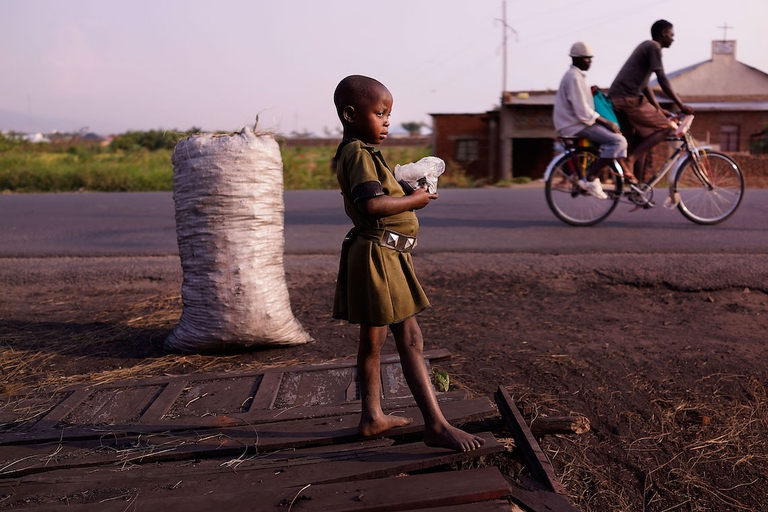
Costa Rica celebrated its first same-sex marriage when two women, Alexandra Quiros and Dunia Araya, celebrated their wedding: an “extraordinary moment”.
UNICEF’s annual report shows progress, yet overall figures remain unacceptable. The UN agency calls for immediate action.
69 million children under age five will die for preventable causes by 2030, the year when the UN programme including the Sustainable Development Goals will end. This is more than France’s entire population. Another 167 million children will live in poverty and 750 million young girls will be obliged to get married.
These appalling figures are included in the last annual report compiled by UNICEF that explains that this scenario is inevitable if governments, international companies and organisations across the world don’t invest in efficient policies aimed at protecting children in the next years.
https://www.youtube.com/watch?v=og-XDKvNuoE
“Denying hundreds of millions of children a fair chance in life – UNICEF’s director general Anthony Lake said – does more than threaten their futures by fueling intergenerational cycles of disadvantage, it imperils the future of their societies. We have a choice: invest in these children now or allow our world to become still more unequal and divided”.
Fortunately, the report highlights that significant progress has been made over the years. In particular, global mortality rate for children under age five has decreased by 50% compared to 1990 levels. Similarly, the number of children living in poverty has halved. Deaths from pneumonia, diarrhoea, malaria, sepsis, whooping cough, tetanus, meningitis, measles and AIDS have decreased 5.4 million in 2000 to 2.5 million in 2015.
In spite of the progress made, poorer children have double probability to die before turning five compared to wealthier children and to suffer from chronic malnutrition. Most of them live in South Asia or Sub Saharan Africa: in this region the situation is particularly dire with at least 247 million children (two out three) dying every year because they don’t have the means to survive.
Moreover, about 124 million children still don’t have access to primary school. And two children out of five who attended school didn’t learn to read and write, nor to do basic math operations. “Progress so far – said Justin Forsyth, UNICEF Deputy Executive Director – has mainly been made by focusing a lot on children that are easier to reach, or on interventions on health and nutrition with a high impact. What we are finding now is that if we don’t focus on the most disadvantaged we won’t accelerate this progress”.
Siamo anche su WhatsApp. Segui il canale ufficiale LifeGate per restare aggiornata, aggiornato sulle ultime notizie e sulle nostre attività.
![]()
Quest'opera è distribuita con Licenza Creative Commons Attribuzione - Non commerciale - Non opere derivate 4.0 Internazionale.
Costa Rica celebrated its first same-sex marriage when two women, Alexandra Quiros and Dunia Araya, celebrated their wedding: an “extraordinary moment”.
On top of a 2.4 million dollar compensation, the indigenous Ashaninka people will receive an official apology from the companies who deforested their lands in the 1980s.
From Italy to the United States, workers in the logistics and delivery sectors are protesting to demand better sanitary conditions to protect themselves from Covid-19.
The pandemic and its restrictions are affecting everyone, without exceptions. However factors like housing, income inequalities, gender, access to technology and working conditions are influencing how people experience the health crisis.
In the midst of India’s coronavirus lockdown, two dozen people lost their lives in a desperate bid to return home: migrant labourers forced to leave the cities where they worked once starvation began knocking at their doors.
Apple, Dell, Microsoft and Tesla are among the tech companies named in a lawsuit brought in the US by the families of children killed and maimed in cobalt mining activities in the Democratic Republic of Congo.
We, the people is Survival’s 2020 calendar, which features the winners of the photography contest showcasing images of the world’s indigenous peoples.
Un violador en tu camino – the rapist is you – is an anthem protesting the impunity of gender-based violence. It began in Chile and has become a global flash mob, bringing people to the streets and resonating all over the world.
Abiy Ahmed was awarded the Nobel Peace Prize for reaching peace with Eritrea. Yet, Indigenous groups in Ethiopia’s Lower Omo Valley have been abused by security forces, a fact that the prime minister must address, says the Oakland Institute.








